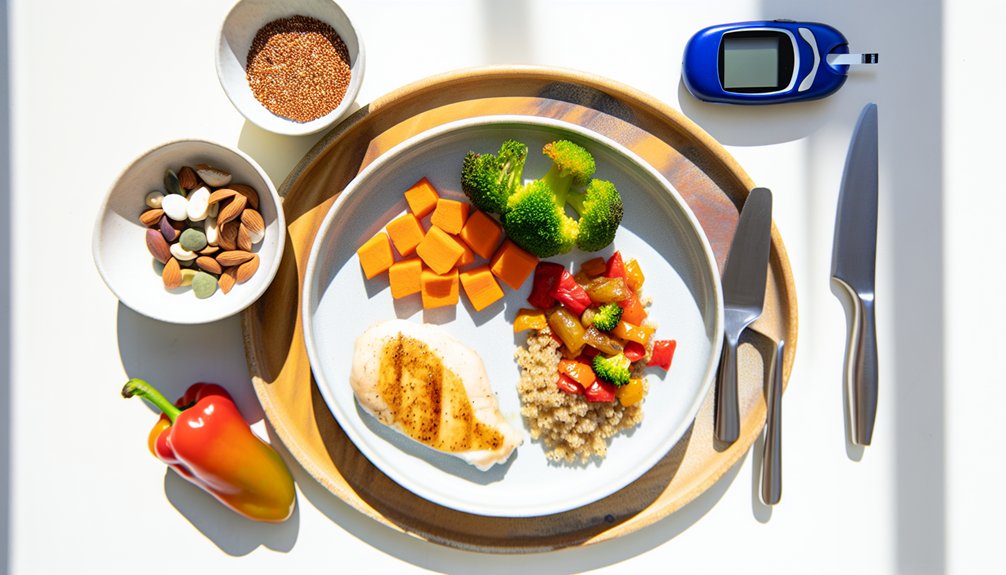Balancing meals is key for managing type 1 diabetes. Whole grains, beans, and lean proteins nourish the body and keep blood sugar steady. Snacks should be healthy, like fresh fruit or yogurt, avoiding processed options that can cause spikes. Monitoring glucose regularly helps personalize meals, making eating enjoyable yet safe. It’s empowering to discover delicious foods that support health goals. With a little effort, a fulfilling life with diabetes is completely within reach. More tips await to enhance this journey.

What if managing Type 1 diabetes could be as simple as making thoughtful food choices? For many, the journey with diabetes feels like a constant balancing act. However, understanding how to manage carbohydrates can greatly improve blood sugar control. Carbohydrates, which include sugars and starches, convert to sugar during digestion, affecting glucose levels. That’s why it’s crucial to match insulin doses with carbohydrate intake. Choosing whole grains, beans, and starchy vegetables provides not just fiber but also a slower absorption of sugar.
Imagine sitting down for lunch with a delicious whole-grain sandwich filled with chicken, or perhaps a vibrant bean salad. These meals not only nourish but also help maintain stability in blood sugar levels. A diet rich in lean proteins and healthy fats, like those from nuts and seeds, further supports metabolic health while keeping meals enjoyable. Consistent blood sugar monitoring is essential for understanding how different foods impact glucose levels, allowing for better management of Type 1 diabetes. Additionally, collaborating with healthcare professionals ensures that dietary choices align with individual needs and insulin regimens.
Savoring whole grains and plant-based proteins can create delicious meals while stabilizing blood sugar levels.
Balancing meals to include 2-4 servings of carbohydrates and emphasizing plant-based proteins can make a world of difference. It’s also important to pay attention to portion sizes and timing. Setting specific health goals with measurable outcomes helps track dietary progress effectively. Individualized meal planning, ideally with a dietitian, can tailor these choices to one’s lifestyle, activity level, and insulin regimen. This type of personalized strategy guarantees that eating becomes less of a chore and more of a nourishing experience.
When it comes to snacks, opting for nutrient-dense options like unsweetened yogurt or fresh fruit can satisfy cravings without the blood sugar spikes associated with processed snacks. After all, who doesn’t crave a little something in between meals?
Lastly, syncing meals with insulin types can simplify glucose management. Regular blood glucose checks before meals allow for necessary adjustments, making life with diabetes a little less intimidating. With thoughtful choices, individuals can embrace a fulfilling life, knowing that managing their condition can be a delicious journey.
